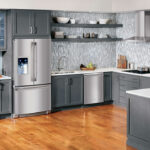Exploring Tech-Infused Safety in Commercial Environments
In the ever-evolving landscape of commercial safety, the integration of technology has brought about a paradigm shift in how we manage and maintain secure environments. This fusion of technical prowess with safety measures is now more apparent than ever in the protocols and procedures that govern our commercial spaces. As we delve into this world of tech-infused safety, we unearth the symbiotic relationship between the rigorous standards of fire damper testing and the meticulous processes of modern commercial cleaning services. Together, they form a robust frontline defence against potential hazards, safeguarding both assets and occupants alike.
The Intersection of Fire Safety and Cleaning Protocols
The correlation between fire safety and cleanliness is underpinned by a simple yet profound principle: a well-maintained space is a safer space. Regular assessments of fire safety components, such as fire dampers, are critical in ensuring that these systems function correctly in the event of a fire. Simultaneously, the upkeep of cleanliness through commercial cleaning services directly impacts fire safety, with procedures such as TR19 cleaning setting the standard for ductwork hygiene, thereby reducing the risk of fire.
Understanding Fire Dampers in Commercial Safety
Fire dampers are a vital component in the fire protection infrastructure of commercial buildings. They serve a crucial function in containing and preventing the spread of fire and smoke through a building’s ventilation system. In the event of a fire, these dampers are designed to close automatically, blocking the path of the fire and allowing occupants crucial time to evacuate safely.
The Crucial Role of Fire Dampers in Preventing Fire Spread
The primary role of fire dampers cannot be overstated. Positioned within the ductwork, they remain on guard, ready to act when the threat of fire emerges. Their activation is typically triggered by a rise in temperature, indicating the presence of fire, thereby initiating the closure mechanism. This function is a key aspect of a building’s passive fire protection system, working in conjunction with other fire-stopping measures to maintain the integrity of fire-resistant compartments.
Regular Maintenance and the Necessity of Fire Damper Testing
To ensure their reliability, fire dampers require regular testing and maintenance, a process that is not just recommended but often mandated by fire safety regulations. Fire damper testing involves a series of checks and balances: inspectors assess the physical condition of the dampers, their accessibility, and their operational readiness. The testing ensures that in the event of a fire, the dampers will perform as expected, a non-negotiable aspect of commercial building safety.
Compliance with Fire Safety Regulations
Staying compliant with fire safety regulations is not just a legal requirement; it is a moral imperative for building owners and managers. Regular fire damper testing is part of this compliance. It also serves as a proactive measure to identify potential issues before they escalate into serious problems, ensuring that fire dampers are always ready to fulfill their life saving purpose.
Advancements in Commercial Cleaning Services
The commercial cleaning industry has undergone a significant transformation, driven by technological advancements and an increased focus on health and safety. Today’s commercial cleaning services extend far beyond mere aesthetics, playing a vital role in maintaining the health, safety, and well-being of building occupants.
Innovations in Cleaning for Commercial Spaces
Innovation in the cleaning industry has brought forward sophisticated equipment and eco-friendly cleaning agents, enabling deeper and more efficient cleaning processes. These advancements are not only more effective but also faster, reducing downtime in commercial spaces and ensuring that businesses can operate without significant interruptions. Furthermore, the integration of smart technology allows for the remote monitoring of cleanliness and the optimisation of cleaning schedules based on real-time data.
The Role and Advancements of Commercial Cleaning Services
Modern commercial cleaning services now address a multitude of concerns, including allergen reduction, air quality improvement, and the minimisation of fire hazards. Trained professionals employ a variety of techniques to ensure that all areas of a commercial space, especially those that are difficult to reach or often overlooked, are thoroughly cleaned and sanitised. This comprehensive approach to cleaning is essential for the prevention of issues that could compromise the safety and health standards of a building.
The Evolution of Cleaning Equipment and Solutions
The industry’s evolution has been marked by the development of advanced cleaning solutions and the equipment used to apply them. From high-efficiency particulate air (HEPA) filters in vacuum cleaners to robotic cleaning devices, the equipment used in today’s commercial cleaning services ensures high standards of cleanliness are met. Additionally, the use of eco-friendly and non-toxic cleaning agents helps to maintain a safe environment for both the cleaners and the building’s occupants.
Upholding TR19 Cleaning Standards
TR19 is a set of guidelines developed by the Building Engineering Services Association (BESA) in the UK, outlining the best practice for the cleaning of ventilation ducts. This standard has become a benchmark for ensuring that ductwork cleaning services meet rigorous hygiene requirements, which is crucial for both fire safety and public health.
Defining TR19 and Its Relevance to Commercial Hygiene
TR19 standards provide a comprehensive framework for the assessment, cleaning, and maintenance of ventilation systems. They are designed to ensure that the indoor air quality is kept at optimal levels, reducing the risk of fire and the spread of airborne contaminants. These guidelines are particularly pertinent in commercial kitchens and other areas where grease and other flammable substances can accumulate in the ductwork.
Ensuring Compliance and Safety through TR19 Cleaning
Adherence to TR19 is essential not just for compliance with health and safety legislation but also for maintaining insurance policies. TR19 cleaning ensures that ventilation systems are free from obstruction and contamination, which can significantly fuel a fire if ignited. Professional cleaning services that follow these standards play a vital role in mitigating these risks, providing peace of mind for business owners and occupants alike.
The Role of Technology in TR19 Compliance
The enforcement of TR19 standards has been enhanced by the use of advanced inspection and cleaning technologies. High-definition inspection cameras, robotic cleaning equipment, and specialised extraction devices enable thorough and efficient cleaning of ductwork. This tech-infused approach to TR19 compliance not only ensures that the standards are met but also streamlines the cleaning process, reducing service interruption and maintaining business continuity.
The Importance of Air Duct Hygiene
Maintaining clean air ducts is essential for both air quality and fire safety in commercial environments. Over time, ductwork can accumulate dust, debris, and other flammable materials, which not only impacts the efficiency of HVAC systems but also poses a significant fire risk.
Understanding the Link Between Air Ducts and Fire Risks
Air ducts are hidden conduits for airflow, and when they are not properly maintained, they can become a harbinger for hazards. Accumulated dust and debris not only impair air quality but can also become a fuel source for fires. This risk is exacerbated in environments such as commercial kitchens where there is a higher likelihood of grease and oil buildup within the ducts.
Best Practices for Air Duct Cleaning Services in Commercial Buildings
Implementing best practices for air duct cleaning services is pivotal in mitigating these risks. Regular inspections and cleanings remove the buildup of hazardous materials and ensure that the ducts are operating safely and efficiently. This is not just a safety measure but also a performance issue, as clean ducts facilitate better airflow and reduce energy costs.
Technological Enhancements in Air Duct Cleaning
Technological advancements have significantly improved the process of cleaning air ducts. Automated tools and equipment, such as rotary brushes and vacuum systems with HEPA filtration, are now used to ensure a thorough clean. These technologies are effective at reaching all areas within the ductwork, providing a level of cleanliness that manual methods cannot achieve.
Integrating Fire Safety and Cleaning Protocols
The synergy between fire safety checks like fire damper testing and commercial cleaning operations is vital for the safety of commercial environments. Integrating these processes can help to ensure compliance with safety regulations and protect building occupants.
Efficient Maintenance Through Synchronized Services
Synchronising fire damper inspections with cleaning schedules allows for a streamlined maintenance process, ensuring both tasks are thoroughly and efficiently completed. This integration facilitates a comprehensive approach to commercial safety, eliminating potential oversights.
Collaborative Safety Enhancements
The collaboration between fire safety and cleaning professionals brings together diverse expertise, leading to more effective safety protocols. Technological advancements support this integration, with smart systems enabling better coordination and monitoring of maintenance tasks.
Conclusion
The melding of technology with fire safety and cleaning protocols heralds a new era for commercial space maintenance. Innovations are driving higher safety standards and hinting at a future rich with smart, preventative measures.
The Prospect of Smarter Safety Solutions
Advancements suggest a shift towards intelligent systems that offer real-time insights and predictive upkeep, promising to bolster the safety of commercial premises significantly.
The Enduring Need for Diligent Maintenance
Despite technological strides, the necessity for regular fire damper testing and diligent commercial cleaning services, embracing TR19 cleaning and air duct cleaning services, remains at the heart of commercial safety. Adhering to these practices is paramount for maintaining optimal safety and cleanliness standards.
In embracing both enduring maintenance practices and emerging technologies, businesses can navigate the evolving landscape of commercial safety with confidence.







